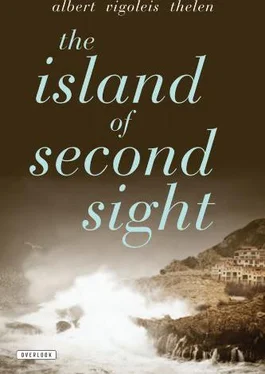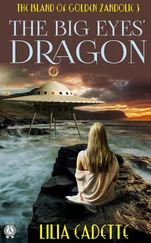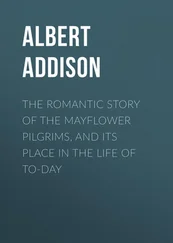Thelen’s move to the Spanish island of Mallorca was his first voyage to a foreign land. The cause of this sudden departure was a dramatic event: an appeal for help from his partner Beatrice’s brother, which reached the couple in the form of a telegram containing the laconic message, “Am dying. Zwingli,” As it turned out, this was a vast exaggeration: Zwingli was actually in the best of mental health, although physically he was not at all tip-top. He was held in thrall to a Spanish whore.
Thelen had met Zwingli and his brother, Albert Theophil Bruckner, in 1928, and soon after, they introduced him to their sister, Beatrice Adele. As an assistant to Albert Theophil, Vigoleis worked at the “Pressa” Exhibition, while Peter Herbert Zwingli Bruckner was studying art history at Cologne University. Vigoleis and Beatrice got to know each other during the preparations for the “Pressa” events, and they eventually married, and would remain together until the very end of their lives. Theirs became one of the greatest love affairs in literature, as well as in reality.
Beatrice came from a Swiss academic family. Her father was a theologian, and her father’s brother was a linguist. Like Thelen, she was an aspiring artist from a family for whom such pursuits were foreign — she was hoping to become a classical pianist. But Albert and Beatrice’s lifelong love affair was about more than shared backgrounds and interests. There was clearly something deeper, as when, in Cologne, Beatrice had rescued him — this melancholy, depressive man — when he attempted suicide by leaping into to the Rhine. Asked about this event in their lives, Beatrice remained regally silent.
“We belonged together”
That Beatrice saved Vigoleis’ life in 1928 may not be very important — after all, she saved his life often enough during the following sixty-one years they spent together. No, the greatest gift she gave him was what he desperately needed: orientation. Above all, she supported his intention to become a writer. She nourished a talent that others failed to notice, and she was surely the first person to discover Thelen’s extraordinary literary gifts. Without her there might never have existed a writer named Thelen.
Later, while he was writing The Island of Second Sight , Thelen read aloud to her every evening the text he had composed during the day. There were times, she said, when they laughed themselves silly. Beatrice refrained from criticizing her husband’s work. And why should she? She had decided in his favor — to support the man and the artist. “Even at the worst of times on Mallorca, under the threat of getting shot and all that, I never intended to leave Vigoleis,” she said in an interview in the early 1980s. “We belonged together, and I was absolutely in agreement with what he did, what he said, and what he wrote.”
Their journey to the Balearic island turned out to be an enormous test of strength — one that endowed their still young relationship with a permanent bond. What is still unclear, though, is whether Thelen viewed this removal as an escape from the atmosphere of his hometown in Germany — not unlike Goethe’s escape to Italy — or, rather, as an accidental but welcome opportunity to start afresh. It remains a fact that Thelen stayed on Mallorca, his “island of second sight,” for six years, so at the very least, he was consciously avoiding a quick return to his former surroundings.
But regardless of his initial intentions, we know that his sojourn — those six years — transformed Thelen’s literary life. In Mallorca, he translated (from the Dutch); he reviewed works by emigrants from Germany (for the Dutch newspaper Het Vaderland ); he discovered the Portuguese poet and mystic Teixeira de Pascoaes as a kindred intellectual soul; and, without realizing it, he absorbed material for his magnum opus. What he and Beatrice experienced between 1931 and 1936 would later find its way into The Island of Second Sight . Their Mallorcan escapades and misadventures provided the stimulus for one of the grandest and richest works in the history of world literature.
Back then, Thelen had no inkling of any of this, and he had no plans to exploit his experiences. He never kept a diary, and it was only later that he wrote down from memory what he had lived through. The only direct record of his experiences is contained in his letters from that earlier period, only a few of which have survived. Twenty years had to pass before Thelen used real-life events to give shape to the work that would establish his fame forever.
This is surely one of the reasons for the extraordinary quality of Thelen’s book — for its grand humor and its abundance of ideas. The twenty-year gap allowed him to view his characters and their doings in a wholly different manner than if he had written things down directly, as they happened. How might Thelen’s Mallorca book have looked if he had written it while still on the island, or directly thereafter? Perhaps we would have in our hands a completely standard travelogue of the type produced in the eighteenth and nineteenth centuries. Thelen, we may surmise, would have described the island, its places, its people, and its culture — but not much more.
Thelen’s “Cactus Style”
When Moby-Dick was first published, Herman Melville’s contemporaries were disappointed. They regarded as superfluous — indeed as annoying — the abundance of metaphysical reflections and technical digressions, especially those that concerned the hunting of whales. What they wanted, instead, was Melville the travel writer, not the philosopher and whaling expert.
Thelen, too, was criticized for his digressive form of narration. Some contemporary reviewers of the Island would have preferred a book with fewer ancillary passages, a work that clung more firmly to the narrative thread and moved faster. It is fortunate for literary history that this was not the course Thelen pursued and that, instead, he found his own inimitable style and remained true to it. In the Island he himself calls this his “cactus style”: “it [forms] branches and offshoots at random, like a cactus with its urge to sprout buds just where you would never expect them.”
This “cactus style” places Thelen on a par with the three other first-rank practitioners of digressive narrative: Laurence Sterne, Jean Paul, and Theodor Gottlieb von Hippel. These writers, too, were blamed by contemporary critics for their numerous digressions. But what the critics overlooked was the fact that the digressions were neither padding nor extraneous material, but elements of methodical narrative technique.
Thelen, too, does not race from A to B. He doesn’t race at all; he ambles. At times he crawls. He enters secondary pathways and often takes three steps backward — sometimes into his own childhood. Often, when the reader wishes to know how the main story will continue, Thelen inserts a retarding passage. One wishes to call out to him, “That’s enough! Take us back to your plot! Tell us what happened next with Vigoleis and Beatrice!” But no, Thelen prefers to go off on a tangent. And if you choose to follow him there, you will be rewarded. In the end, after over 700 pages, you are pleased that nothing and no one has forced the author to abandon his “cactus style.”
But just what is The Island of Second Sight , if it is so much more than a Mallorca novel in the form of a travelogue? It is a microcosm of life itself. It is a receptacle containing characters and events, a reservoir of learning, a linguistic treasury, and above all it is what Friedrich Schlegel demanded of any work of art, a “continuum of unending reflection.” It is so full of dazzling figures and happenings that even after repeated readings we have the opinion that we haven’t read all of the stories. That is why the book is inexhaustible, and why it is quite impossible to describe its contents.
Читать дальше












